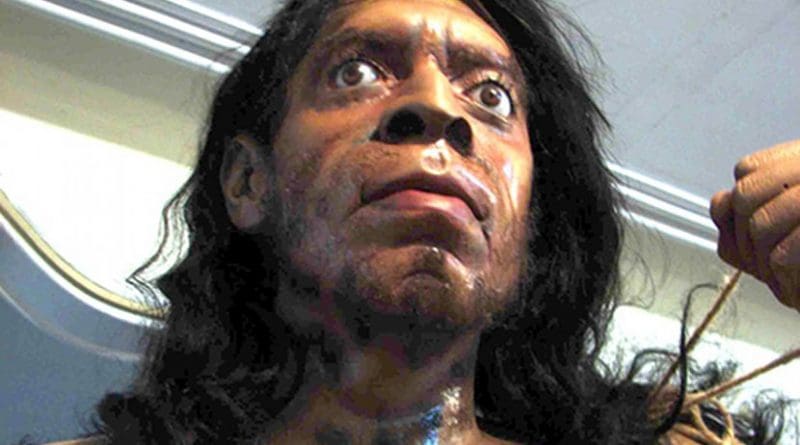Neanderthals More Advanced Than Contemporary Humans? – OpEd
By Paul Woodward - War in Context
Scientific America reports: Experts agree that Neanderthals hunted large game, controlled fire, wore animal furs and made stone tools. But whether they also engaged in activities deemed to be more advanced has been a matter of heated debate. Some researchers have argued that Neanderthals lacked the know-how to effectively exploit small prey, such as birds, and that they did not routinely express themselves through language and other symbolic behaviors. Such shortcomings put the Neanderthals at a distinct disadvantage when anatomically modern humans availed of these skills invaded Europe—which was a Neanderthal stronghold for hundreds of thousands of years—and presumably began competing with them, so the story goes.
Over the past couple decades hints that Neanderthals were savvier than previously thought have surfaced, however. Pigment stains on shells from Spain suggest they painted, pierced animal teeth from France are by all appearances Neanderthal pendants. The list goes on. Yet in all of these cases skeptics have cautioned that the evidence is scant and does not establish that such sophistication was an integral part of the Neanderthal gestalt.
The cutmarked bones from Gibraltar as well as bird remains from other sites could force them to rethink that view. In a paper published September 17 in PLOS ONE, paleontologist Clive Finlayson of the Gibraltar Museum, Rosell, a zooarchaeologist at Rovira I Virgili University in Tarragona, Spain, and their colleagues report on their analyses of animal remains from 1699 fossil sites in Eurasia and north Africa spanning the Pleistocene epoch. Their results show that Neanderthals across western Eurasia were strongly associated with corvids (ravens and the like) and raptors (vultures and their relatives) — more so than were the anatomically modern humans who succeeded them.
The Neanderthals seem unlikely to have hunted these birds for food. People today do not eat corvids or raptors. Moreover, if the Neanderthals did hunt the birds for food, one would expect to see signs of butchery on those bones linked to fleshy parts of the bird, such as the breastbone. Yet the team’s study of the bird bones from the Gibraltar sites found the cutmarks on wing bones, which have little meat — a sign that the Neanderthals targeted the birds for their feathers rather than their meat.
Exactly what the Neanderthals were doing with the feathers is unknown, but because they specifically sought out birds with dark plumage, the researchers suspect that our kissing cousins were festooning themselves with the resplendent flight feathers. Not only are feathers beautiful, they are also lightweight, which makes them ideal for decoration, Finlayson points out. “We don’t think it’s a coincidence that so many modern human cultures across the world have used them.”
Everyone loves these stories that reveal similarities between contemporary humans and our distant ancestors (or even non-human species). But it strikes me that as much as these narratives resonate with a desire for the experience of ancient kinship, they are also colored with condescension. Beings we took to be of very limited intelligence turn out to have a few of the markers that we associate with our own supposedly abundant intelligence.
So, it appears that Neanderthals had a greater interest in their personal appearance than we would have expected among those whose outfits were limited to a choice of animals skins. They adorned themselves with feathers. Still, they weren’t advanced enough to be able to accessorize with Gucci.
In cultures obsessed with stuff, cultural comparisons invariably get limited to comparisons between objects — feathers vs. designer clothes. But even if anthropologists hesitate to speculate at length about why Neanderthals used feathers, I have little doubt that the Neanderthals knew why and their explanations would not have been so banal as simply the idea that feathers look cool. They were adorning themselves with forms endowed with meaning.
What Neanderthals surely possessed were the talents handed down in cultures of every age prior to the age of consumerism. Which is to say, the abilities to create things and to possess them were deeply intertwined. Skills in craft and artistry were a dimension of the social skills that wove societies together. Dexterity, agility and the keen perceptions of those who were attuned to their environment were all necessary for survival.
Even if we live in cultures endowed with the most sophisticated artifacts ever created, the application and cultivation of ingenuity now confined within the hands of a few has rendered the hands of many with no greater skill than the ability to hand over a credit card as culture has been turned into a commodity.

